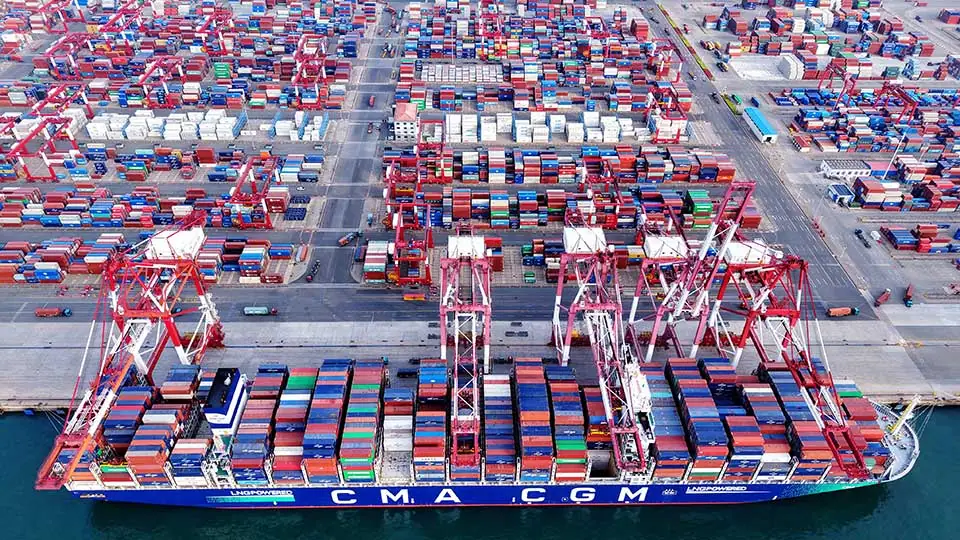In an era where economic uncertainty often renders forecasts obsolete before they materialize, Africa’s export performance to China between 2022 and 2026 stands out as a compelling exception. Projections that I made together with Professor Reon Matemane, an associate professor at the University of Pretoria, in 2022 did not just approximate reality; they closely mirror actual trade statistics.
This rare alignment between forecasts and actual outcomes offers vital lessons for policymakers, economists, and trade strategists alike. It underscores the value of robust forecasting techniques and data-driven planning in navigating complex international trade relationships, particularly as Africa deepens its economic ties with China.
A Rare Alignment: When Forecasts Actually Meet Reality
In our study, we projected a sharp decline in Africa’s exports to China, from an estimated $119.20 billion in 2022 to $13.68 billion by 2026 (see Table 1). Remarkably, the actual export statistics for 2022–2023, as reported by both the China Africa Research Initiative (CARI)—a widely acknowledged source on China–Africa bilateral trade dataset—and the General Administration of Customs of the People’s Republic of China (GACC), closely align with the forecasted averages.
While discrepancies exist between the CARI and GACC statistics, the export values reported by both for this period fall within the projected ranges, reinforcing the validity of the forecasts. This alignment underscores the strength of the forecasting technique utilized and lends credibility to the study’s longer-term outlook.
The inconsistencies between GACC data and other international sources, in general, are well-established in global trade analysis, typically stemming from methodological differences, valuation standards, time lags, transit trade, and occasionally strategic reporting choices.
GACC may strategically inflate import statistics from Africa to portray balanced trade relations and obscure the structural asymmetries driving China’s trade surpluses (Figure 1). In this regard, the 2024 GACC statistic remains questionable and should be interpreted with caution until it can be cross-validated against CARI’s 2024 data, which is yet to be released.
The Resource Trap: Structural Drivers of Africa’s Exports to China
Between 1992 and 2023, 79% of Africa’s total exports to China originated from just ten resource-rich countries (Figure 2), with Angola (33%), South Africa (13%), and the Democratic Republic of Congo(7%) alone accounting for over half (53%) of the total.
This concentration underscores the longstanding dominance of resource-driven export flows in the Africa-China trade relationship. It also reflects China’s strategic alignment toward securing critical raw materials, such as oil, metals, and minerals, for its booming manufacturing industry
The extractive nature of this relationship has been entrenched through resource-seeking foreign direct investments (FDI) and replication of the so-called “Angola model”, which is characterized by infrastructure-for-resource barter deals and resource-backed loans across several resource-rich African countries.
Accordingly, Africa’s export patterns to China, marked by alternating cycles of expansion and contraction (Figure 1), have largely mirrored fluctuations in China’s demand for raw materials and the global commodity price volatility.
The projected decline in Africa’s exports to China between 2022 and 2026 aligns with what Yun Sun, director of the China program at the Stimson Center in Washington, D.C., described as a “shift away from infrastructure” in China’s engagement strategy. This shift was reaffirmed at the 9th Forum on China–Africa Cooperation (FOCAC) Ministerial Conference in Beijing in 2024, where China emphasized a pivot toward digital infrastructure, green energy, and people-centered development, signaling a departure from usual large-scale hard infrastructure projects.
From the early 2000s, Chinese debt financing for energy, transport, and information and communication technology (ICT) infrastructure projects has been a cornerstone of China’s strategy to secure access to Africa’s natural resources. A withdrawal or scaling back from these infrastructure investments may thus signal a decline in resource demand, with direct implications for Africa-China export volumes.
Nonetheless, Africa retains immense strategic value as a global supplier of raw materials, not only to China but also to the Global North. Unless China identifies alternative sources of raw materials, a scenario unlikely in the short run given its deep penetration and quasi-monopolistic position within Africa’s extractive supply chains, the current decline in demand may be short-lived. A rebound in industrial activity or shifts in global value chains could reignite Chinese demand, potentially restoring Africa-China export volumes before or immediately after 2026.
To realize more equitable and sustainable outcomes from its trade relationship with China, natural resource exchange deals must be fairly and transparently valued, ensuring alignment with global commodity prices. Some studies suggest that most existing barter and debt-for-resource deals are significantly undervalued, resulting in economic losses and opportunity costs for African countries.
The Africa-China trade model must evolve from extractivism to equity; without bold reform, the forecasts will continue to echo the past
Africa’s ongoing reluctance to confront China’s exploitative practices has perpetuated an imbalanced partnership. A more unified and assertive negotiating stance is essential, leveraging regional institutions such as the African Union (AU) and the African Continental Free Trade Area (AfCFTA) to craft collective trade and investment frameworks that reflect continental development goals.
Strengthening the institutional architecture governing external financing and trade agreements is also essential at both the national and continental levels. This includes reforming contract enforcement, debt transparency, and oversight mechanisms to reduce asymmetry in China-Africa engagements.
Beyond exporting raw materials, African countries should priorities beneficiation or domestic value addition in strategic sectors such as mining, agriculture, and renewable energy. This shift would enhance resilience to external shocks and improve Africa’s integration into global value chains.
Finally, China must also take practical rather than rhetorical responsibility for the long-term development outcomes of its engagement with Africa. A commitment to equitable, transparent, and development-oriented cooperation will not only build trust but also ensure the sustainability of the partnership.
In a nutshell, while the short-run trajectory suggests a downturn in Africa’s exports to China, the China-Africa relationship retains significant potential. With the right reforms and strategic alignment, this partnership can be transformed into a win-win framework that supports Africa’s structural transformation and aligns with China’s evolving global strategy.
Marvellous Ngundu is a research consultant for the Institute for Security Studies in Pretoria.


